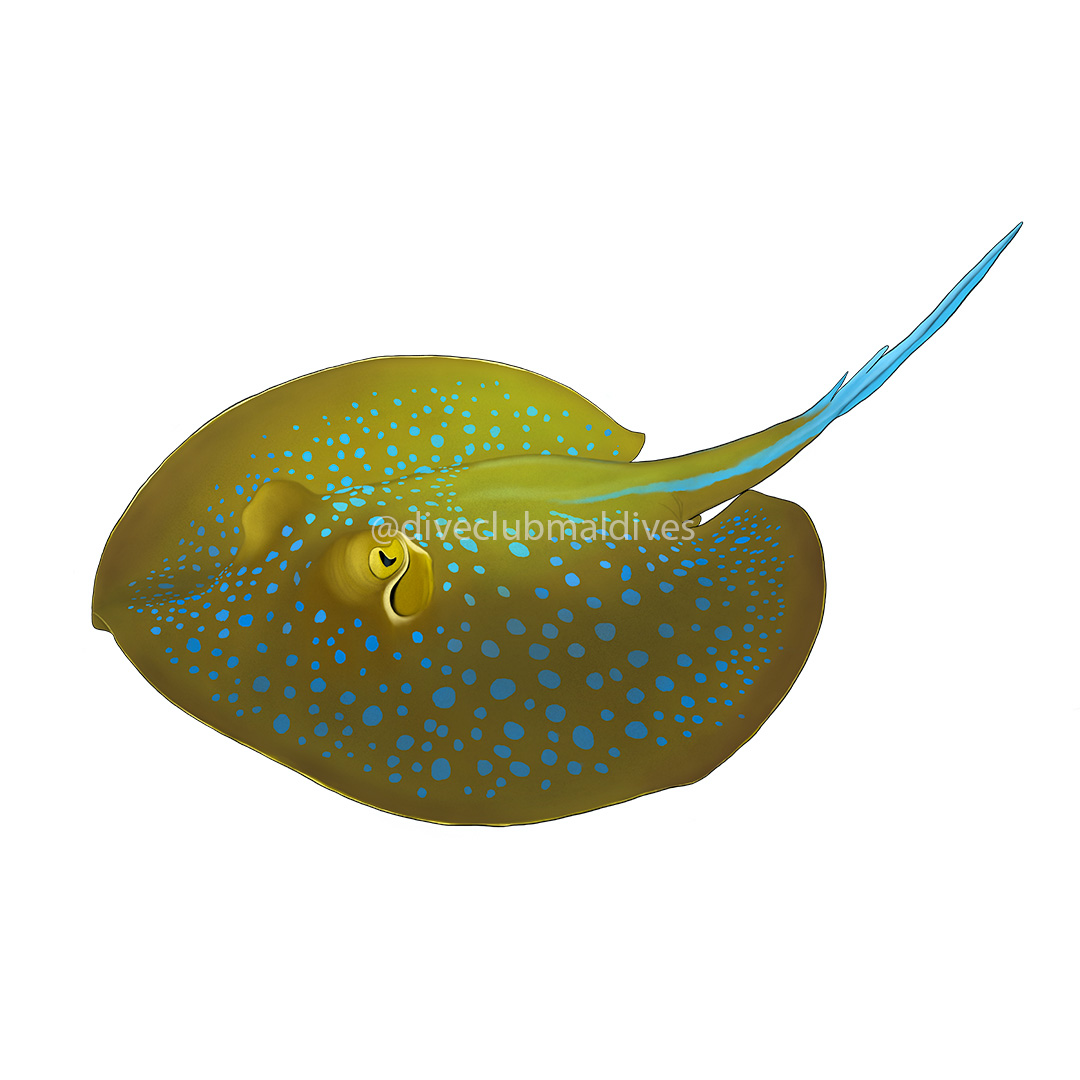English Name: Blue Spotted Ribbontail Ray
Local Name: Ribbon Madi
Size: 0.35 m
Family: DASYATIDAE
Order: Myliobatiformes
Distinctive Characters: A small stingray with an oval disc that is longer than wide; disc width approximately 0.8 x length. Snout short and rounded. Tip of snout not extended. Anterior margins of disc convex. Pectoral fin apices broadly rounded. Pelvic fins short; apices narrowly rounded.
Eyes large and highly protruding. Snout length 2x combined eye and spiracle length. Eyes close together.
Mouth with 2 large oral papillae. Prominent labial furrows around mouth. Prominent papillae on nasal curtain and lower lip. Nasal curtain narrow and long; posterior margin V-shaped and heavily fringed. Nostrils long and thin.
Small patch of thorns on nape. A row of thorns usually extend from nape to base of tail. Tail broad and depressed at base, tapering gently to caudal sting, then fairly thin to tip. No prickly denticles on tail. Tail length (when intact) approximately 1.5 x disc width. Ventral finfold very long; stretching from before midpoint to tip. Dorsal finfold barely discernible; a fleshy ridge. Two tail stings usually present.
Colour: Dorsum orange-yellow to olive-brown with many large blue spots. Ventrum white often with a broad yellowish margin. Blue stripes run along tail to caudal sting. Tail beyond sting pale blue with a white tip. Ventral finfold pale or yellow-brown fading to blue near margin, solid white towards tip of tail.
Habitat and Biology: Tropical seas. On sandy substrates adjacent to reefs and in sea grass beds. Intertidal to 20m.
Distribution:Widespread in the Indo-West Pacific. South Africa and Madagascar to Australia, including the Red Sea, Arabian Gulf, India and Sri Lanka to Maldives, and throughout southeast Asia and northern Australia.
Remarks: Bluespotted Ribbontail Rays are not known to form aggregations, so there are no particular spots where they are especially abundant but they are regularly encountered throughout their range. Fairly easy to approach when resting. Usually retreats deeper into caves or under ledges when closely approached. Sedentary. Rests under reef ledges and in caves during the day. Feeds nocturnally.
